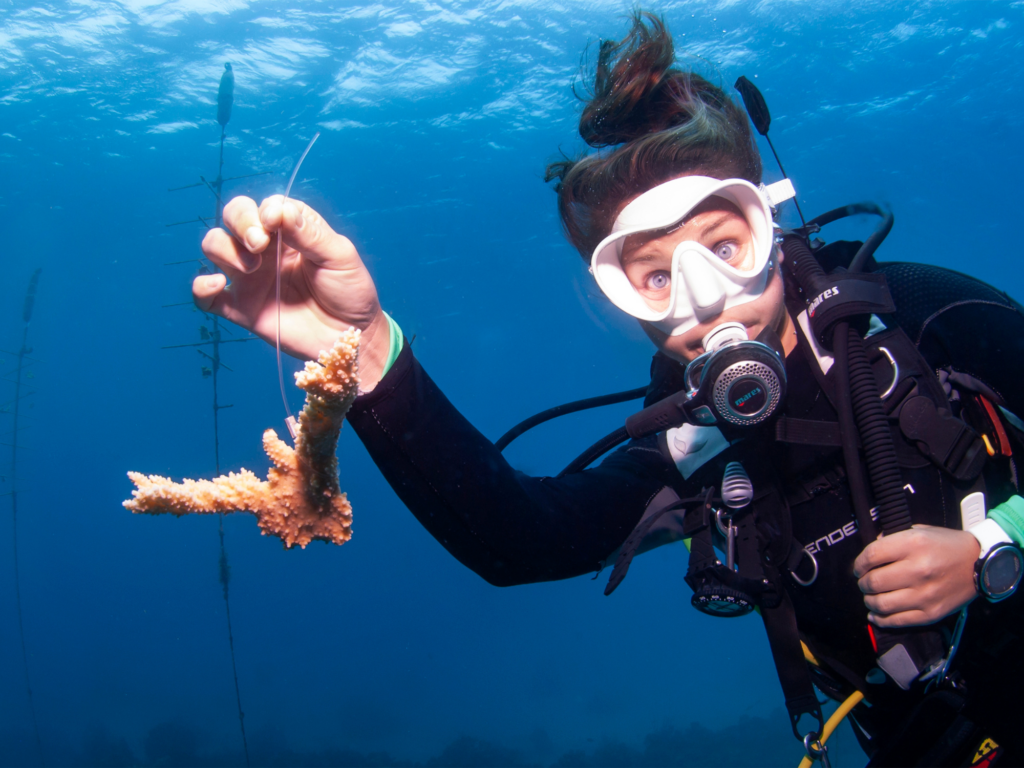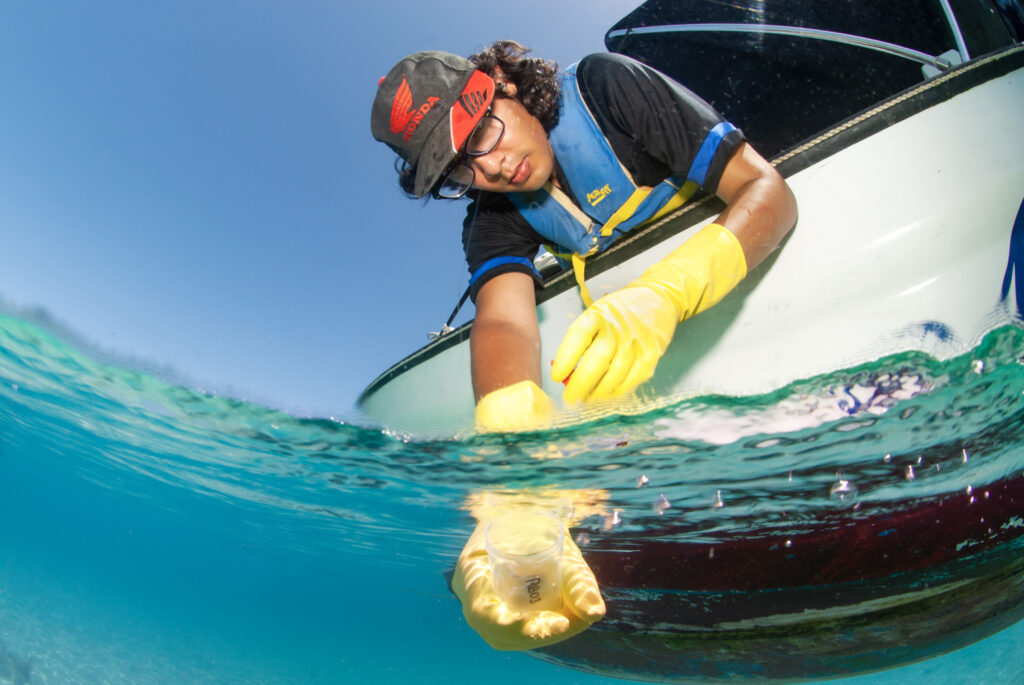Can coral restoration save coral reefs? That’s a question we at CORAL have been asked time and time again. It’s a good question—but it’s also a complex one. The answer may not be what you think.
The Risks with Growing and Planting Corals
In many scientific communities, “coral restoration” refers to the act of growing corals and then planting them in the wild. While it’s an incredibly popular method of coral reef conservation, research has shown that if done alone, the act of growing and planting corals is unlikely to save coral reefs. For starters, it only works if local threats to coral reefs are reduced. If corals are planted in an area where existing corals are already threatened by wastewater pollution or overfishing, then the newly planted corals don’t have a high chance of survival.
Climate change is another concern—as ocean temperatures warm, corals that aren’t heat tolerant
will have a harder time surviving. In some situations, scientists and conservationists focus just on planting coral species that are more heat tolerant. But that can be inherently risky, because it means that we as humans are picking the species that we believe will be better suited for future conditions, when we don’t know with certainty what those future conditions will be.
In some situations, corals can be bred to be more heat tolerant—these are sometimes called “super
corals.” While this sounds promising, a study that we collaborated on shows that in order for these types of outplanting projects to be effective at protecting corals from climate change, they would need to be done at a large scale for hundreds of years in conjunction with efforts to reduce local threats to coral reefs.
That’s not to say that growing corals and planting them in the wild isn’t worthwhile—it can be a great
way to repopulate an area after a storm or boat anchor damage, for example. It can also be helpful in engaging communities and tourists, and bringing more awareness to the plight of coral reefs. In fact, a lot of our partners engage in coral planting and have found it to yield promising results when combined with reducing local threats to reefs.

True Coral Restoration Goes Beyond Just Planting Corals
Outside of specific scientific and conservation communities, the term “restoration” refers to reverting something to its original or natural state. When it comes to coral reefs, that is definitely something we do—and it’s a practice that can save coral reefs.
Our programs that focus on securing clean water for reefs and addressing overfishing aim to restore coral reefs to a more natural, healthier state and protect them from human impacts. And our research shows that when we restore coral reefs in this way, they can adapt to climate change on their own—without too much human interference.
What does this kind of restoration look like on the ground? It looks like our work in West End, Roatan, in Honduras, where we helped the community operationalize a wastewater treatment plant and as a result saw the amount of coral disease drop from 25 percent to zero percent. It looks like our work in
Maui, Hawaiʻi, where over 100 volunteers have restored a section of dirt roads by using native plants to trap sediment runoff and keep it off coral reefs. And it looks like our work in Tela Bay, Honduras, where we’ve seen a 483 percent increase in fish biomass after partnering with communities to build sustainable fisheries.
All of these efforts help restore coral reefs back to a healthier state, where they not only have a better chance of adapting to climate change, but are also more resilient to disease, storm damage, bleaching, and more.

So Can Restoration Save Coral Reefs?
As our research has shown consistently, the key to protecting coral reefs long term is to restore coral reefs to a healthier state and create the conditions that will allow corals to adapt to climate change.
There are two parts to this: the first is curbing our carbon emissions to reduce the rate of climate change. There are a lot of great organizations working in this space and advancing initiatives around clean energy, sustainable production, and more. While we still have a long way to go to truly solve the climate crisis, the fact that we are seeing these conversations and this work more amplified than ever before gives us hope. We’re also doing our part by joining public calls to action, sitting on global committees to influence governments that make climate decisions, and using our position as scientists and conservationists to build more awareness around the urgency of climate action.
The second part is what we focus on at CORAL: building networks of healthy, adaptive coral reefs. We know that coral larvae can travel for miles before ultimately settling on a reef. We also know that some corals have adapted to become more heat tolerant than others. Therefore, we reduce local threats where corals are already more heat tolerant and in places where their babies are settling, which allows corals to spread their heat-tolerant genes and ultimately change the overall makeup of some coral reefs to become more heat tolerant.
So yes, coral restoration that focuses on reducing human impacts and reverting corals back to a healthier, less threatened state can save coral reefs. And in some cases, coral planting to supplement those efforts might make sense, particularly in places where threats have already been addressed.
